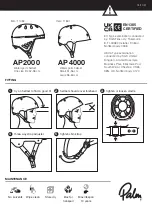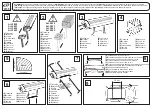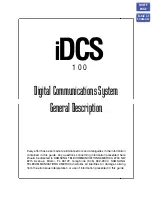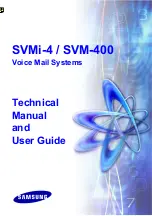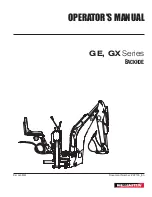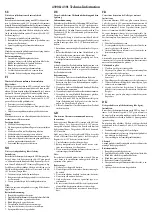
Pins 4 and 5 host the equipment functions block output (Error), each with the same elec-
trical characteristics.
Pins 3 and 7 can be connected to a EIA/TIA 485 communication interface that allows the
device to be controlled remotely. Refer to the appropriate manual for instructions on how
to use this interface.
Pin 6 can be connected to a ground wire to increase resistance to electrical disturbances of
the equipment. The sleeve of a shielded cable must not be used for this connection.
8 – CPO use
Once powered and having waited a few seconds to enable the CPO to optimise reading,
the equipment starts to work and signals on output C and with the green light switching on
each passage of an object in the reading field.
The CPO can, within certain limits distinguish objects that pass through the reading field
and therefore avoid the count of undesired objects such as work waste.
Knob E considerably adjusts detection of small objects. Maximum sensitivity is obtained
by adjusting the knob completely in an anti-clockwise direction. Turning the knob
clockwise reduces sensitivity to detection of small objects.
Knob C adjusts the speed with which objects are detected. Maximum speed is obtained
with the knob completely turned anti-clockwise. Turn the knob clockwise to reduce the
detection speed, i.e. this requires the object occupying the reading field for a greater time
to be detected.
Example:
The vertically falling pens must be counted, but the caps that came off should
not be counted.
In this case, the crossing surface, being the vertical pens, is narrow and is equal if not
lower than that of the caps and therefore the sensitivity necessary to detect the pens is
5
5
9
4
8
3 7
2
6
1
1
2
3
4
5
6
7
8
9
SUPPLY
+
_
VP
CP
VP
CP
ERROR
COUNT
+
+
_
_
B
D1
A
D0
VP = VOLTAGE PROTECTION
CP = CURRENT PROTECTION
+
_








